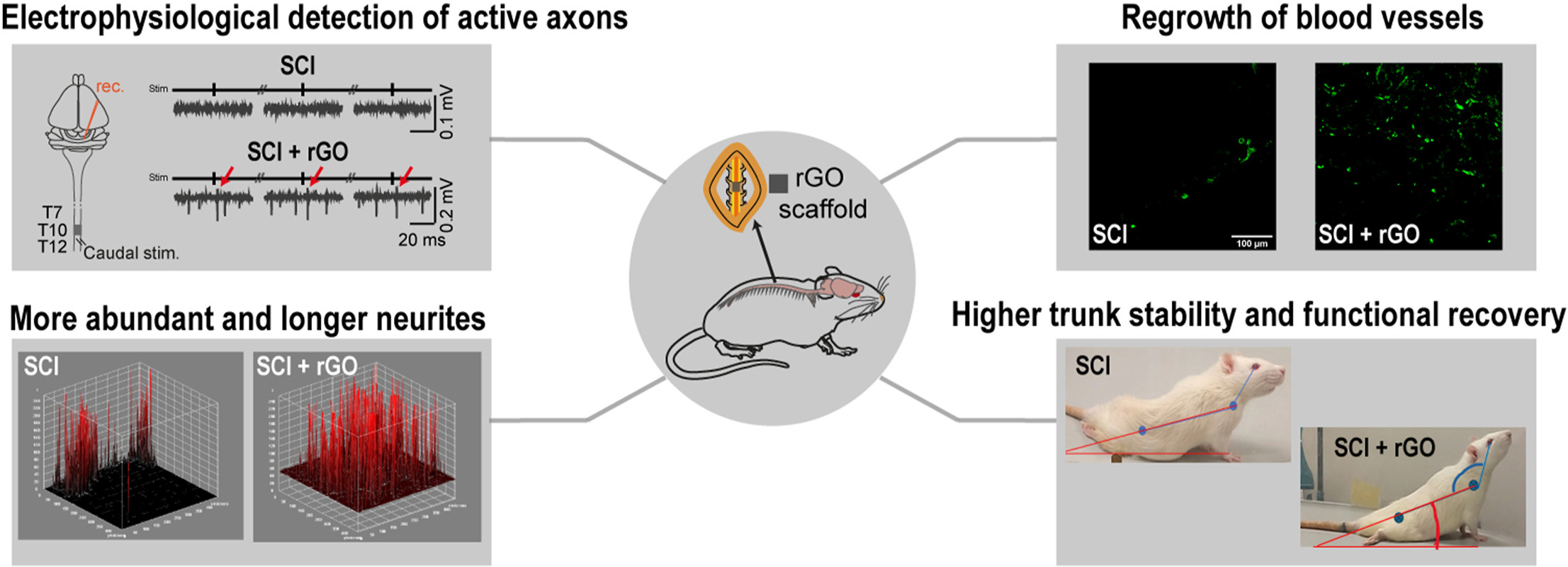Innovative Research on Graphene Oxide Scaffolds: Advancing Spinal Cord Repair
We are excited to share groundbreaking research from our partners SESCAM and CSIC, conducted as part of the Piezo4Spine project. This new study, titled “Graphene oxide scaffolds promote functional improvements mediated by scaffold-invading axons in thoracic transected rats,” recently published in Bioactive Materials, brings us closer to developing innovative solutions for spinal cord injuries.
Background: The Challenge of Spinal Cord Repair
Spinal cord injuries (SCIs) affect millions worldwide, often resulting in life-altering complications. Despite significant advancements, a cure remains elusive. Research into neural tissue engineering has turned to novel materials like graphene oxide, known for its biocompatibility and ability to support neural cell growth and regeneration.
Aim: Developing a Neural Repair Platform
In this study, the team explored the potential of three-dimensional reduced graphene oxide (rGO) scaffolds to repair complete thoracic spinal cord transections. The goal was to create a biomaterial capable of supporting axonal regrowth and functional recovery in regions where no preserved neural networks remain to aid healing.
Key Innovation: Reduced Graphene Oxide Scaffolds
The researchers developed porous rGO scaffolds designed to create a permissive environment for neural and vascular regeneration. These scaffolds were implanted at the lesion site in animal models, allowing the team to assess their impact on axonal regrowth, vascularization, and functional recovery.
The study revealed:
- Electrophysiological evidence: Functional axons invaded the scaffold, with signals originating in brainstem regions critical for motor functions.
- Behavioral improvements: Treated animals exhibited enhanced postural stability, reduced scoliosis, and increased trunk mobility.
- Vascular support: The scaffolds facilitated the development of larger and more abundant blood vessels at the injury site, essential for nourishing neural tissue.
Conclusion: A Step Towards SCI Repair
This research highlights the neuro-reparative potential of rGO scaffolds and their ability to improve functional outcomes after severe SCI. The findings mark a significant advancement in neural tissue engineering.
Looking Ahead: Toward Clinical Applications
This study emphasizes the promise of integrating advanced biomaterials into spinal cord repair. The potential applications extend beyond SCI treatment, influencing broader fields like prosthetics, robotics, and regenerative medicine.
We congratulate the authors Marta Zaforas, Esther Benayas, Raquel Madroñero-Mariscal, Ana Domínguez-Bajo, and their collaborators from institutions including SESCAM and CSIC, for their exceptional work.



